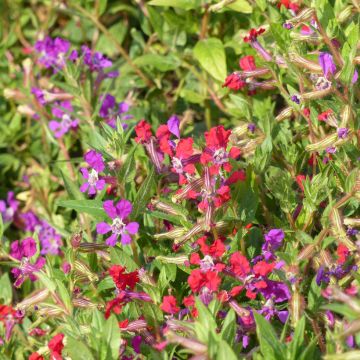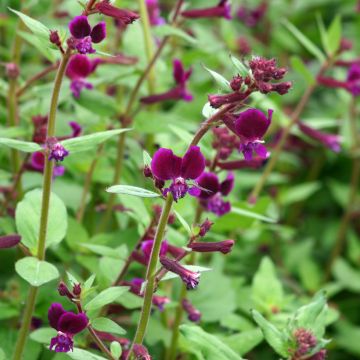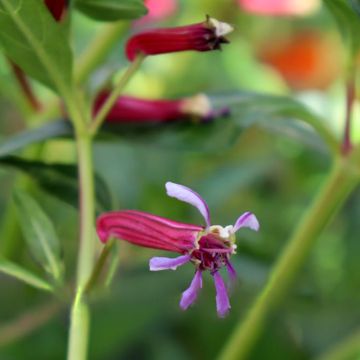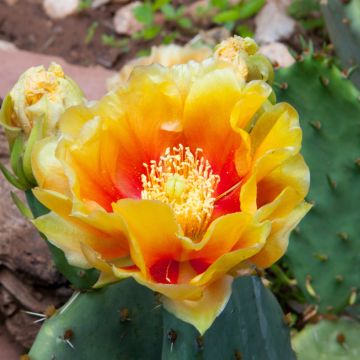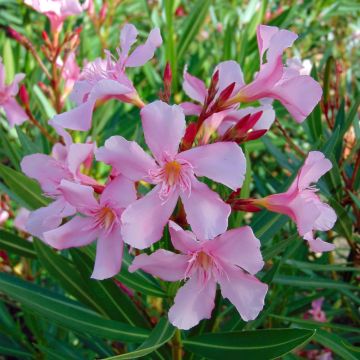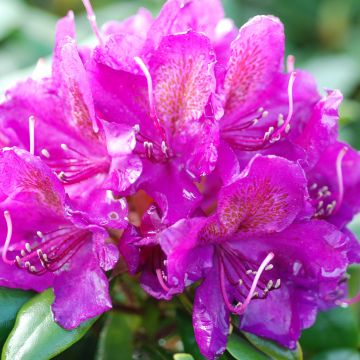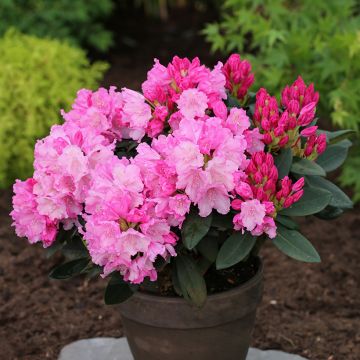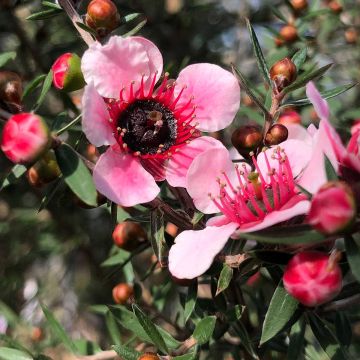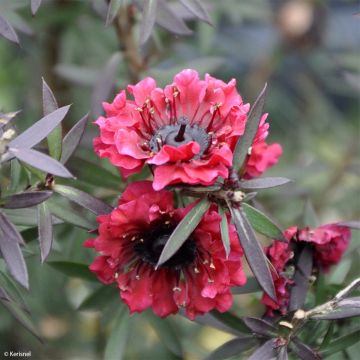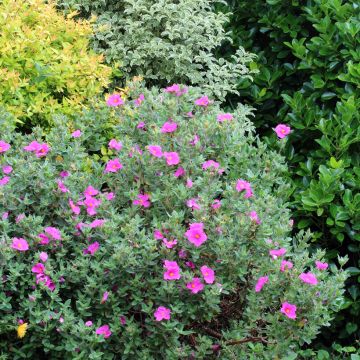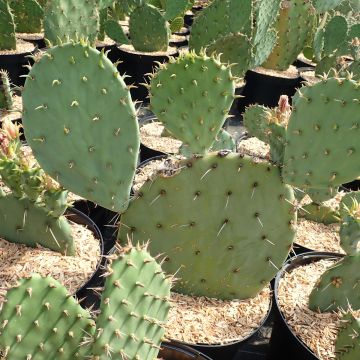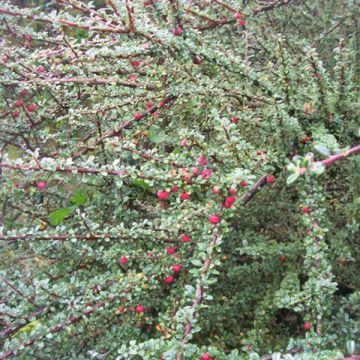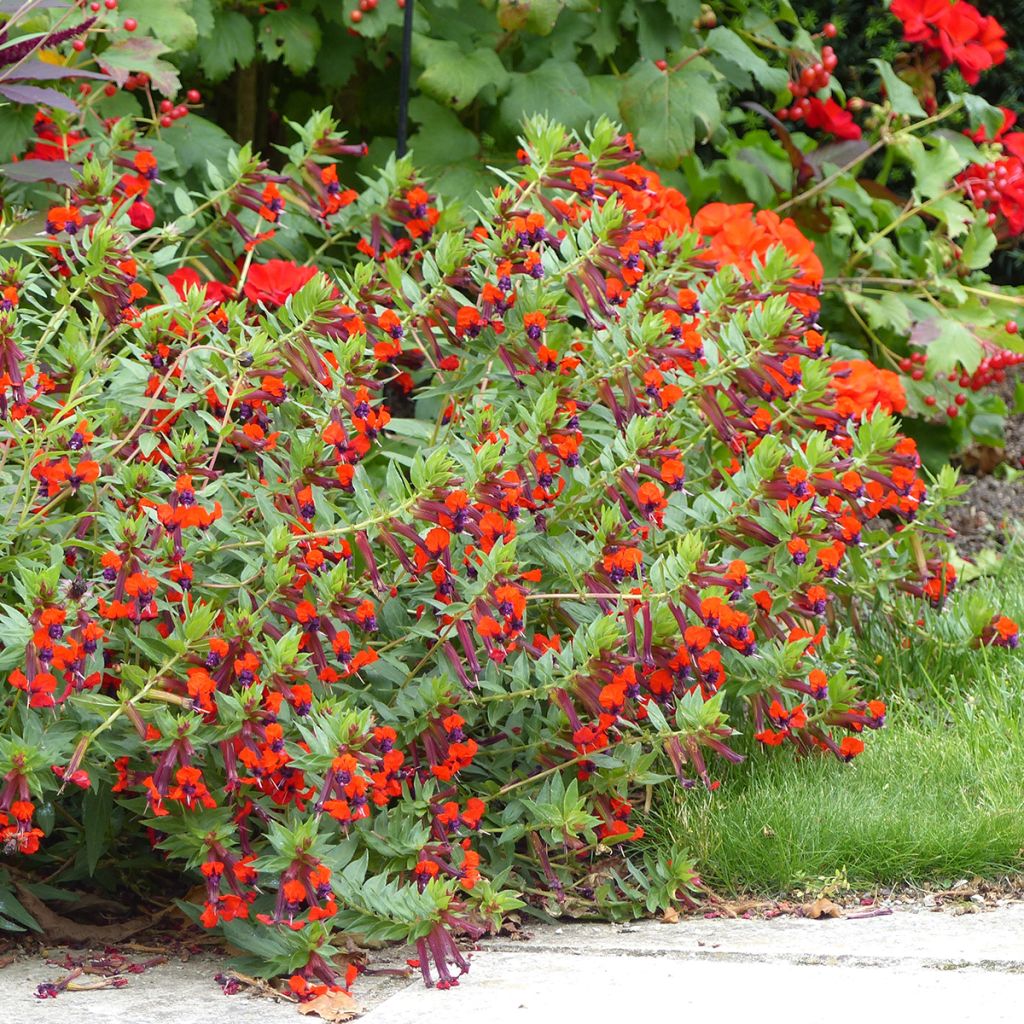

Cuphea llavea Torpedo - Bat-faced cuphea
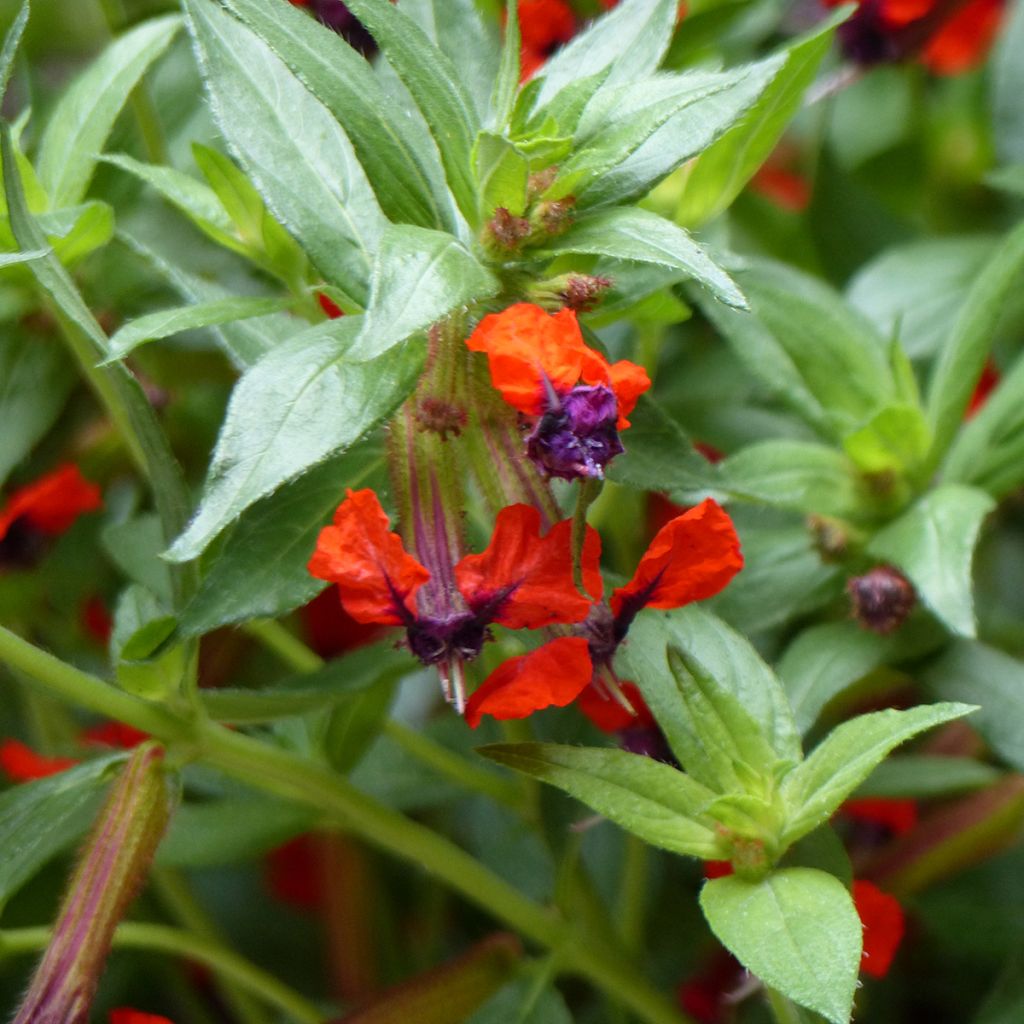

Cuphea llavea Torpedo - Bat-faced cuphea
Cuphea llavea Torpedo - Bat-faced cuphea
Cuphea llavea Torpedo
Bat-faced cuphea
This item cannot be shipped to the selected country
Delivery charge from €5.90
More information
Schedule delivery date,
and select date in basket
This plant carries a 12 months recovery warranty
More information
We guarantee the quality of our plants for a full growing cycle, and will replace at our expense any plant that fails to recover under normal climatic and planting conditions.
From €5.90 for pickup delivery and €6.90 for home delivery
Express home delivery from €8.90.
Does this plant fit my garden?
Set up your Plantfit profile →
Description
Cuphea 'Torpedo' is nicknamed "bat-faced cuphea", referring to the shape of its astonishing flowers. It produces tubular red flowers that are 4cm (2in) long and end with a violet face resembling a bat's head, accentuated by bright red "ears," on a naturally mounding plant. It blooms from late spring until frost. Tolerating heat well, it is an easy plant to grow in full sun, and is generous in flowering as long as it is regularly watered. This shrub is frost-sensitive and grown as an annual plant outside warm regions.
The genus Cuphea, which includes more than 250 species, is a member of the Lythraceae family, which includes herbaceous plant genera in various climates (such as purple loosestrife) and also woody genera in warm climates, like pomegranate. Cuphea is a fast-growing tender undershrub with broad, evergreen leaves, native to Mexico. It is sold as an annual or indoor plant in cooler climates, sometimes under the synonym C. blepharophylla. It is a short-lived plant but easily self-seeds in warm climates, and can even become invasive. It can also root easily when its branches touch the ground.
Cuphea 'Torpedo' is a horticultural variety similar to the species, but with larger flowers. This undershrub forms a dense and highly branched clump 30 to 40cm (12 to 16in) tall and wide, or even slightly larger as it tends to spread over time. It bears small, dark green, persistent leaves that are elliptical, elongated, and narrow, measuring 2 to 3cm (1in) long. The slender, upright then slightly arching stems are highly branched, with lateral shoots often oriented in the same plane. The branches orient themselves in all directions, resulting in a fairly balanced habit that requires no pruning. Flowering begins from May onwards, and continues until frost, producing clusters of flowers in the axils of the leaves. Each flower has a hairy violet calyx with two upward-facing red petals at the tip, forming the "ears" of the "bat face." The four other petals are only small thorny remnants in the species, but in some cultivars, they are fully developed. The flowers attract bees and butterflies.
Cupheas are champions of long-lasting flowering, and this cultivar does it justice. It can only be grown in open ground in very warm regions, where it can find both the heat it prefers and mild winters. It is resistant to light frosts of around -3 to -5°C (16.6 to 23°F). However, the foliage may suffer during colder winters. In such cases, a light pruning in spring usually helps the plant to produce new shoots. It should be given the best conditions to withstand winter: a sunny exposure, well-drained non-calcareous soil, and a position sheltered against the Mistral wind. Regular watering is necessary during the flowering period (it is a plant of tropical origin). Elsewhere, it should be planted in a pot so it can be protected during winter in a frost-free conservatory or a bright room.
Cuphea 'Torpedo' is an excellent border plant for gardens in mild climates and patios. Plant it at the base of a clump of Strelitzia reginae, the bird of paradise, to create a dazzling contrast between the two. Also consider agapanthus with similar growing conditions. If your climate is too cold to plant it in the garden, opt for a beautiful decorative pot. Grow it with Cassia floribunda, whose magnificent yellow flowers will bloom at the same time.
Report an error about the product description
Cuphea llavea Torpedo - Bat-faced cuphea in pictures


Flowering
Foliage
Plant habit
Botanical data
Cuphea
llavea
Torpedo
Lythraceae
Bat-faced cuphea
Cuphea miniata, Cuphea blepharophylla, Parsonsia blepharophylla, Cuphea llavea var. miniata
Cultivar or hybrid
Other Cuphea
Planting and care
Cuphea 'Torpedo' is a species of tropical origin whose cultivation in open ground is reserved for sheltered areas. Everywhere else, this undershrub will need to be protected from frost in winter, or treated as an annual. In the case of planting in open ground, grow it in a sunny position (it tolerates heat well). It grows in neutral to slightly acidic, moist, and well-drained soils.
When grown in a container, it should be regularly watered during hot periods, taking care to let the soil dry between waterings. Add a little liquid fertiliser for flowering plants (containing more potassium (K) than nitrogen (N)) every 2 weeks to encourage flowering. Move it to a bright room (garage with a window, frost-free conservatory) as soon as the nighttime temperatures approach 5°C (41°F).
Planting period
Intended location
Care
This item has not been reviewed yet - be the first to leave a review about it.
Evergreen shrubs
Haven't found what you were looking for?
Hardiness is the lowest winter temperature a plant can endure without suffering serious damage or even dying. However, hardiness is affected by location (a sheltered area, such as a patio), protection (winter cover) and soil type (hardiness is improved by well-drained soil).

Photo Sharing Terms & Conditions
In order to encourage gardeners to interact and share their experiences, Promesse de fleurs offers various media enabling content to be uploaded onto its Site - in particular via the ‘Photo sharing’ module.
The User agrees to refrain from:
- Posting any content that is illegal, prejudicial, insulting, racist, inciteful to hatred, revisionist, contrary to public decency, that infringes on privacy or on the privacy rights of third parties, in particular the publicity rights of persons and goods, intellectual property rights, or the right to privacy.
- Submitting content on behalf of a third party;
- Impersonate the identity of a third party and/or publish any personal information about a third party;
In general, the User undertakes to refrain from any unethical behaviour.
All Content (in particular text, comments, files, images, photos, videos, creative works, etc.), which may be subject to property or intellectual property rights, image or other private rights, shall remain the property of the User, subject to the limited rights granted by the terms of the licence granted by Promesse de fleurs as stated below. Users are at liberty to publish or not to publish such Content on the Site, notably via the ‘Photo Sharing’ facility, and accept that this Content shall be made public and freely accessible, notably on the Internet.
Users further acknowledge, undertake to have ,and guarantee that they hold all necessary rights and permissions to publish such material on the Site, in particular with regard to the legislation in force pertaining to any privacy, property, intellectual property, image, or contractual rights, or rights of any other nature. By publishing such Content on the Site, Users acknowledge accepting full liability as publishers of the Content within the meaning of the law, and grant Promesse de fleurs, free of charge, an inclusive, worldwide licence for the said Content for the entire duration of its publication, including all reproduction, representation, up/downloading, displaying, performing, transmission, and storage rights.
Users also grant permission for their name to be linked to the Content and accept that this link may not always be made available.
By engaging in posting material, Users consent to their Content becoming automatically accessible on the Internet, in particular on other sites and/or blogs and/or web pages of the Promesse de fleurs site, including in particular social pages and the Promesse de fleurs catalogue.
Users may secure the removal of entrusted content free of charge by issuing a simple request via our contact form.
The flowering period indicated on our website applies to countries and regions located in USDA zone 8 (France, the United Kingdom, Ireland, the Netherlands, etc.)
It will vary according to where you live:
- In zones 9 to 10 (Italy, Spain, Greece, etc.), flowering will occur about 2 to 4 weeks earlier.
- In zones 6 to 7 (Germany, Poland, Slovenia, and lower mountainous regions), flowering will be delayed by 2 to 3 weeks.
- In zone 5 (Central Europe, Scandinavia), blooming will be delayed by 3 to 5 weeks.
In temperate climates, pruning of spring-flowering shrubs (forsythia, spireas, etc.) should be done just after flowering.
Pruning of summer-flowering shrubs (Indian Lilac, Perovskia, etc.) can be done in winter or spring.
In cold regions as well as with frost-sensitive plants, avoid pruning too early when severe frosts may still occur.
The planting period indicated on our website applies to countries and regions located in USDA zone 8 (France, United Kingdom, Ireland, Netherlands).
It will vary according to where you live:
- In Mediterranean zones (Marseille, Madrid, Milan, etc.), autumn and winter are the best planting periods.
- In continental zones (Strasbourg, Munich, Vienna, etc.), delay planting by 2 to 3 weeks in spring and bring it forward by 2 to 4 weeks in autumn.
- In mountainous regions (the Alps, Pyrenees, Carpathians, etc.), it is best to plant in late spring (May-June) or late summer (August-September).
The harvesting period indicated on our website applies to countries and regions in USDA zone 8 (France, England, Ireland, the Netherlands).
In colder areas (Scandinavia, Poland, Austria...) fruit and vegetable harvests are likely to be delayed by 3-4 weeks.
In warmer areas (Italy, Spain, Greece, etc.), harvesting will probably take place earlier, depending on weather conditions.
The sowing periods indicated on our website apply to countries and regions within USDA Zone 8 (France, UK, Ireland, Netherlands).
In colder areas (Scandinavia, Poland, Austria...), delay any outdoor sowing by 3-4 weeks, or sow under glass.
In warmer climes (Italy, Spain, Greece, etc.), bring outdoor sowing forward by a few weeks.

































